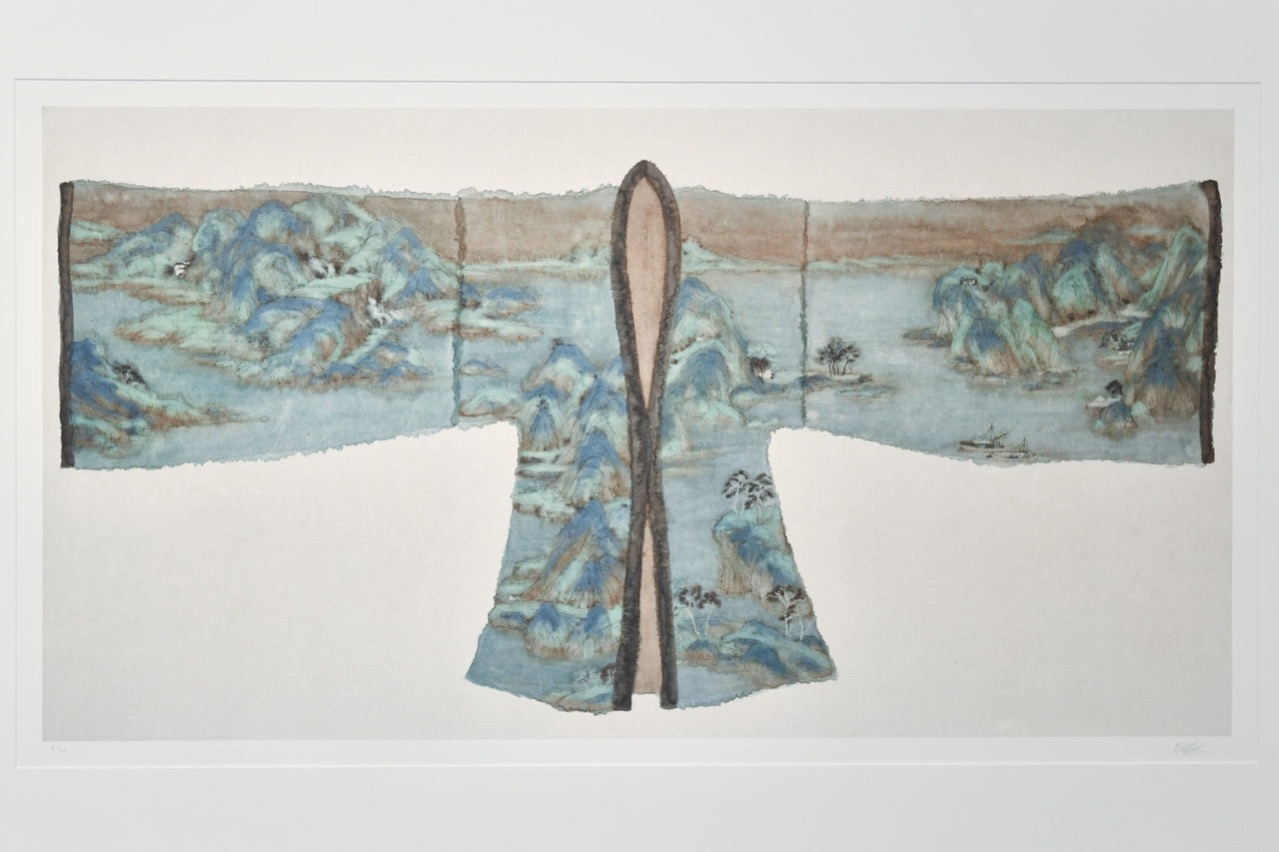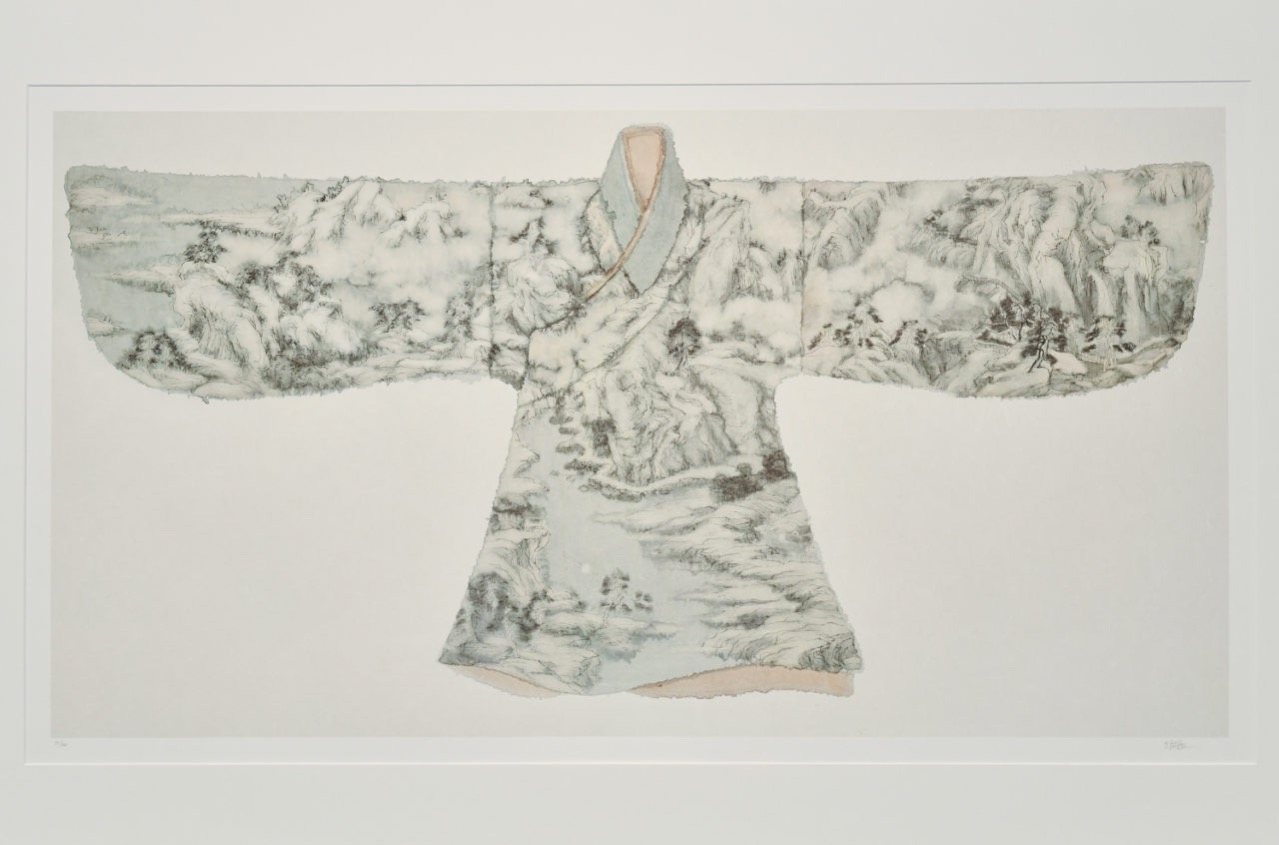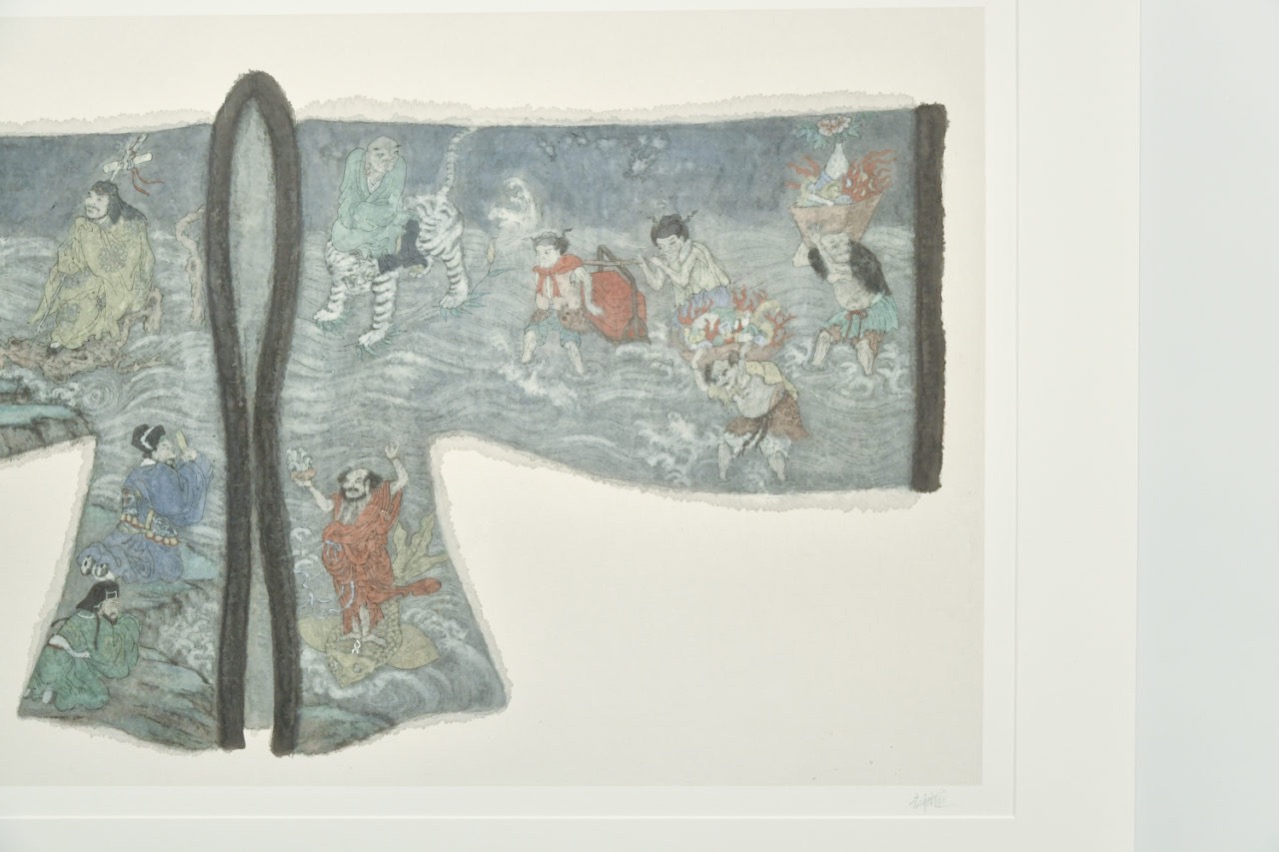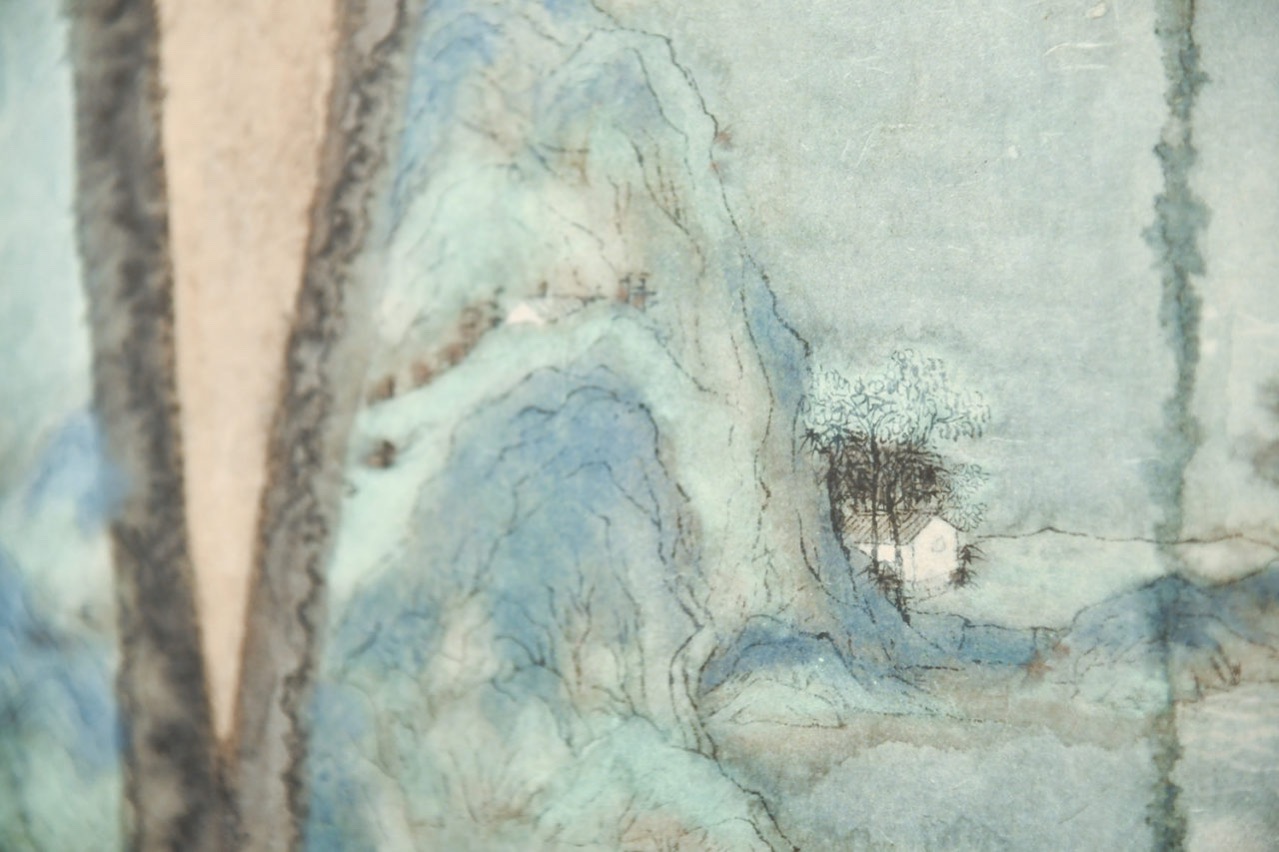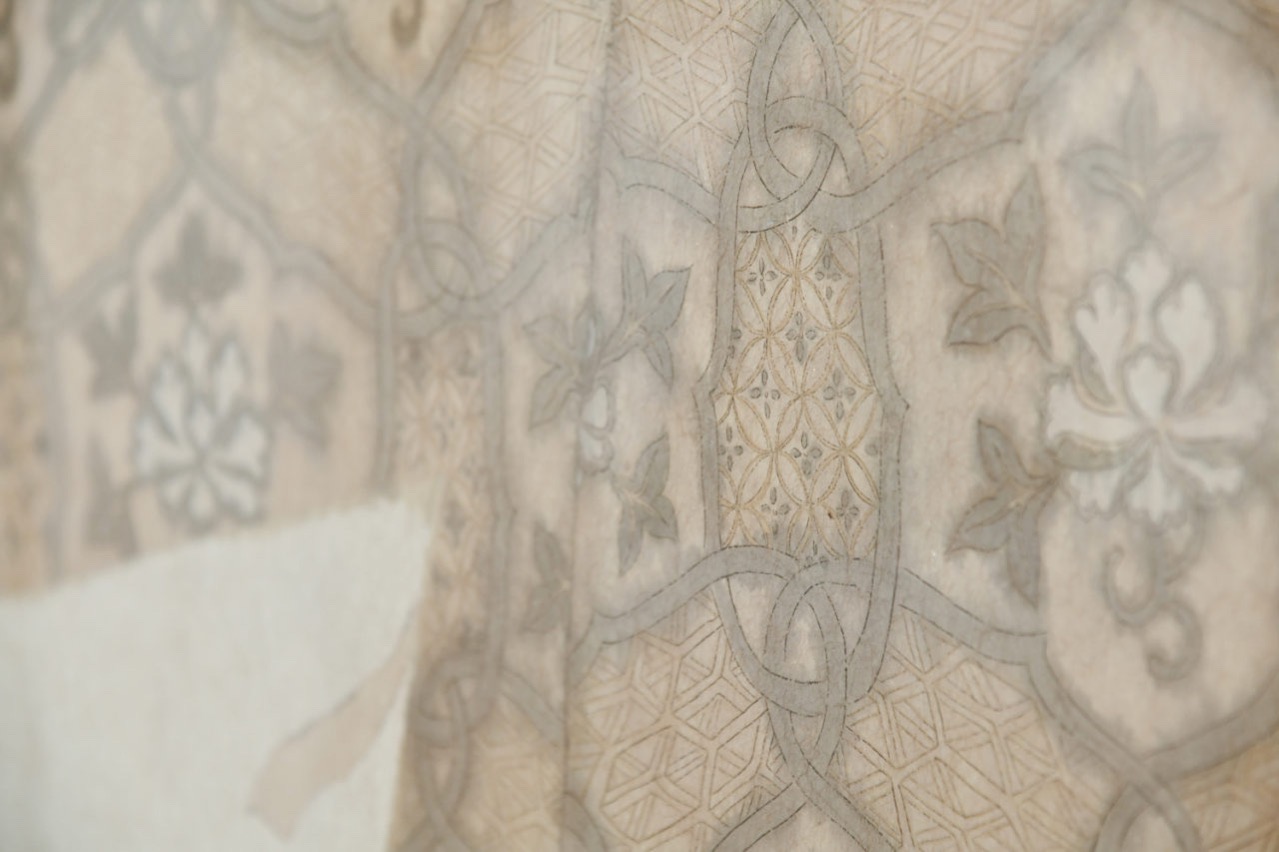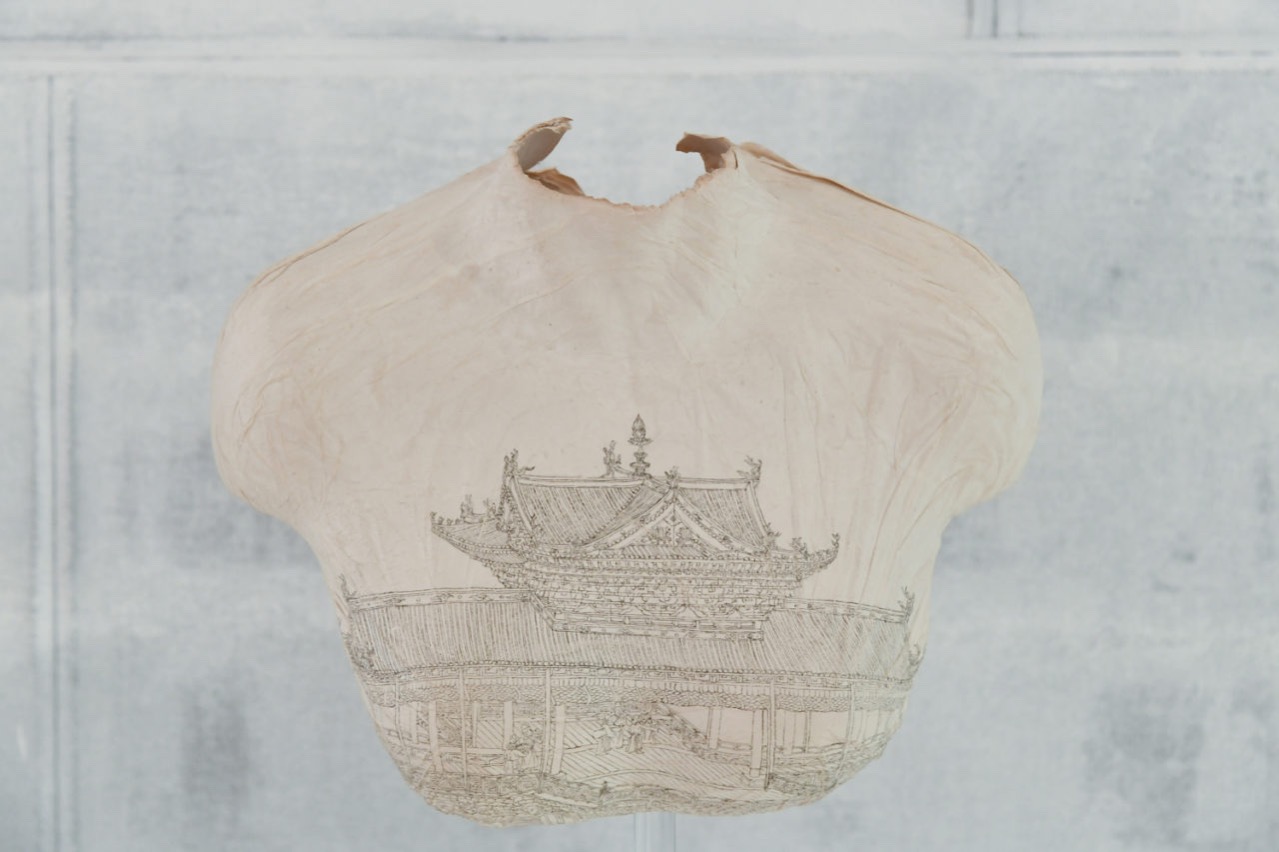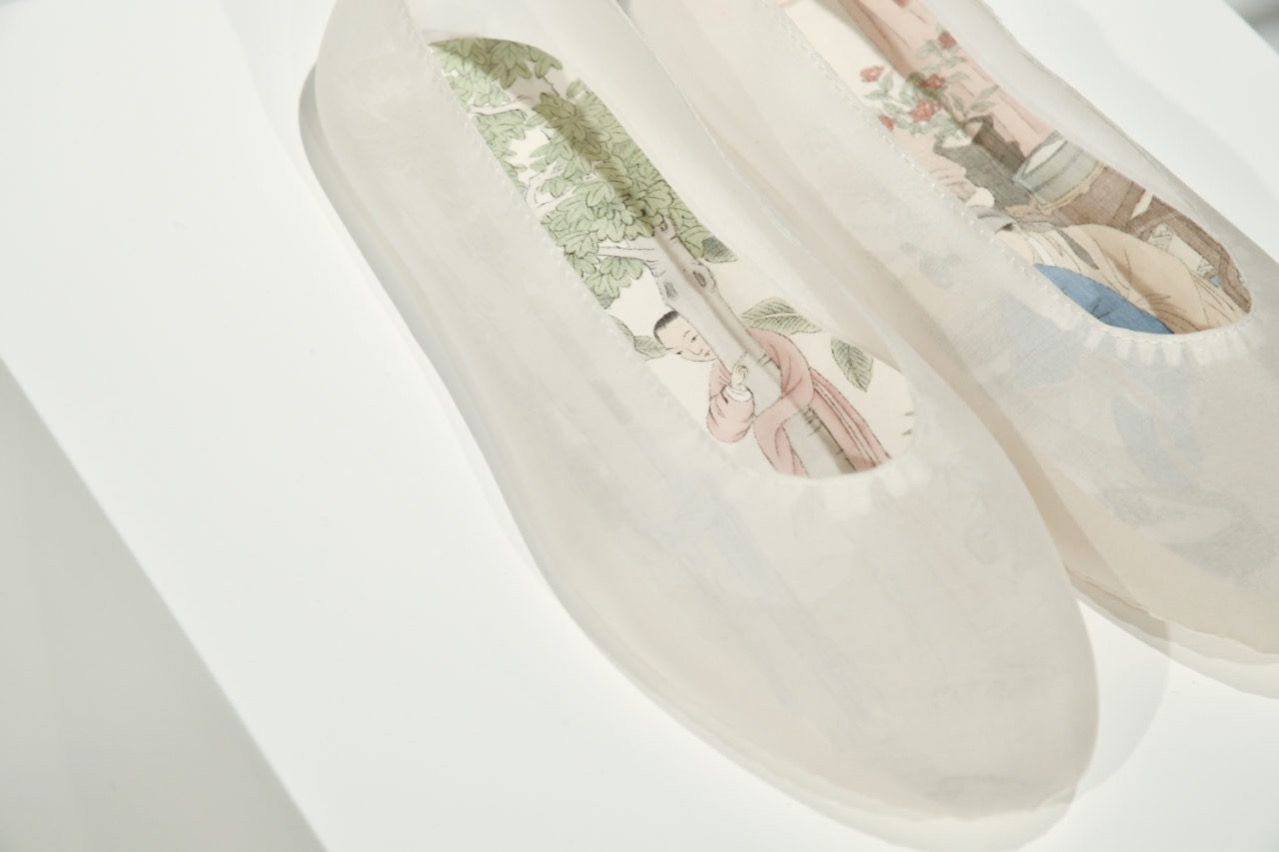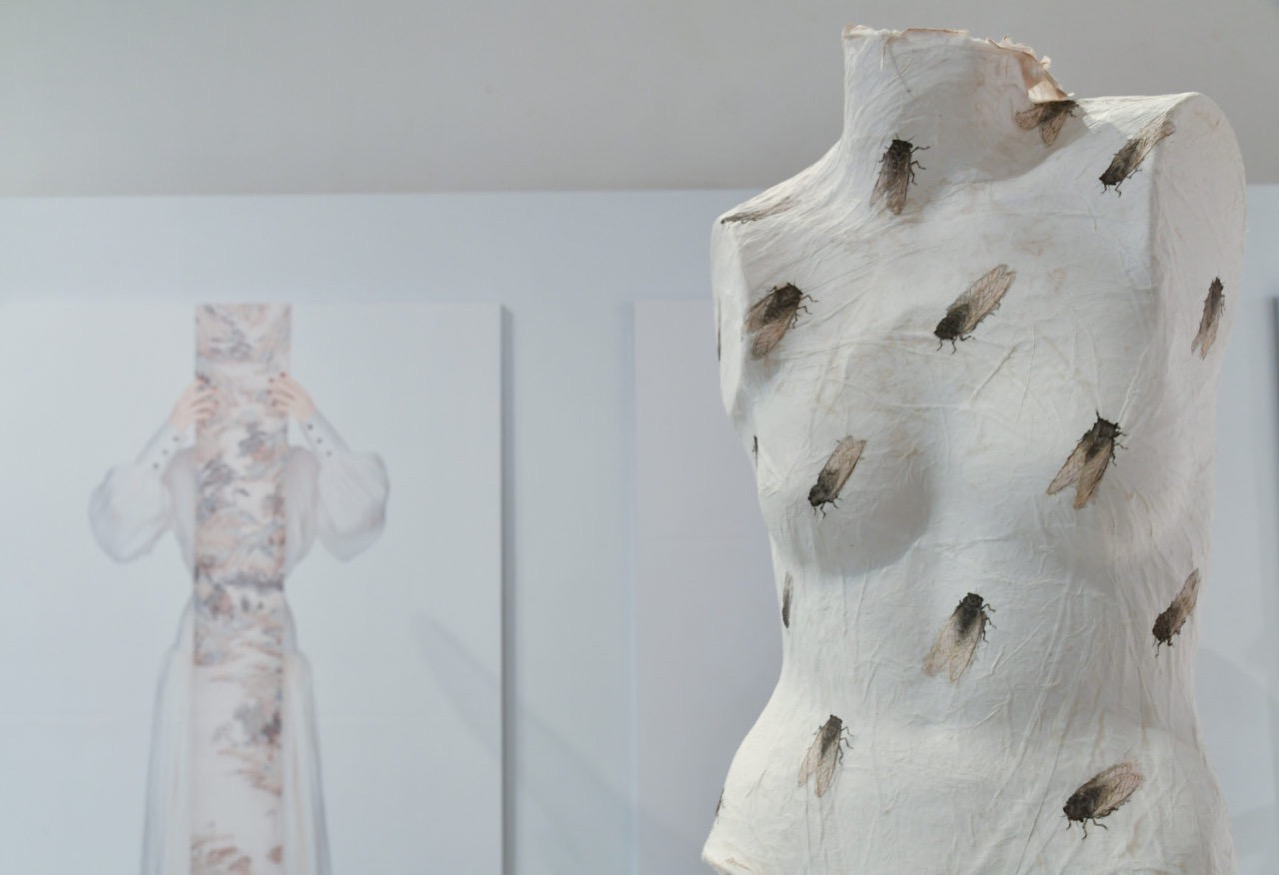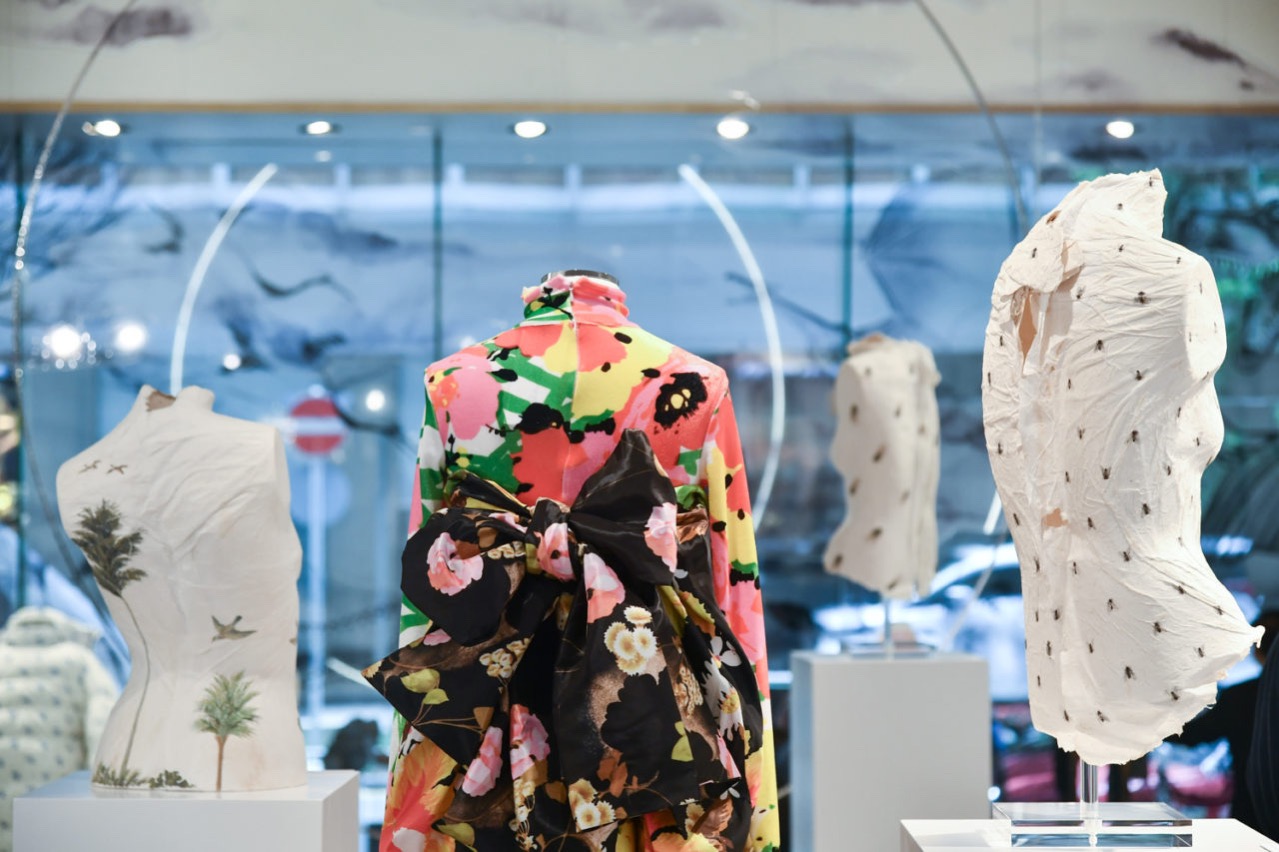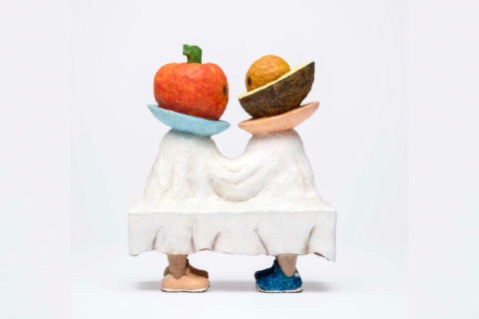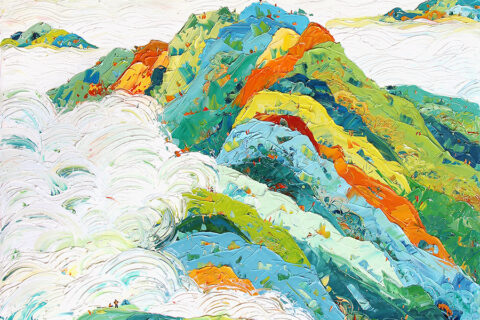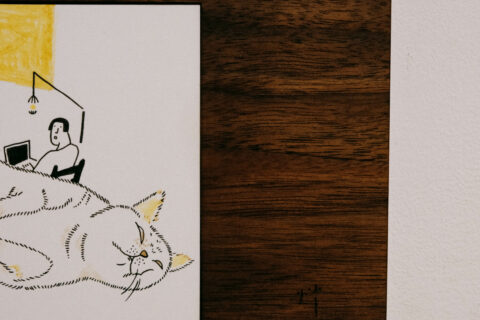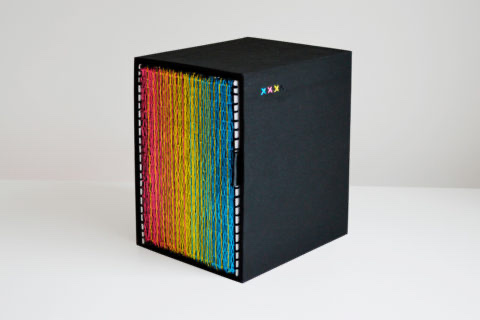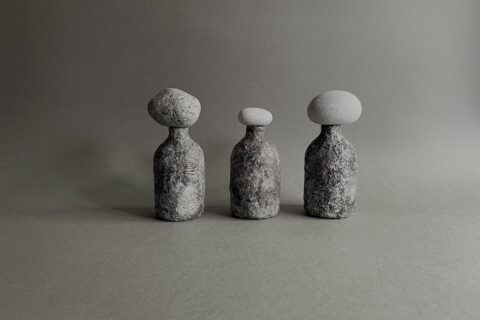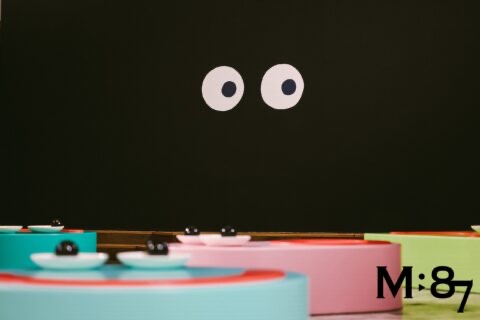
初次見彭薇的作品是上年一個本地水墨展覽「似重若輕:M+水墨藏品」,展出她「遙遠的信件」系列中的作品《雲水隔》,外表與一般傳統卷軸式的山水畫無異,細心一看卻發現畫中有一封來自英國詩人拜倫的情信,文字與山水意境融合,竟微妙地相通連結,予人時空交錯的浪漫感。
最初萌生製作手工書的念頭,慢慢發展成把平面的畫化成立體的卷軸,畫上山水和人物後,感覺中間空白了,於是便把西方藝術家的書信抄寫上去,發現出奇地配合,最後發展成中西合壁的作品。「我很喜歡看西方文學,尤其詩人和藝術家的書信,從抄寫的過程中看到了自己,如大多藝術家都認為自己是不合時宜、不被時代所接受,而創作就是一種救贖。」如此備受藝術界肯定的彭薇也有這種想法嗎?「那當然,我相信每個人也會有這種想法的時候。當我感到很難受時,就從抄寫別人的信來說自己的故事,創作過程中我會感到平靜、安心。事實上,西方藝術家的書信和中國傳統水墨畫本質上是連結的,中、西方的藝術在人文精神上也是相通的。」
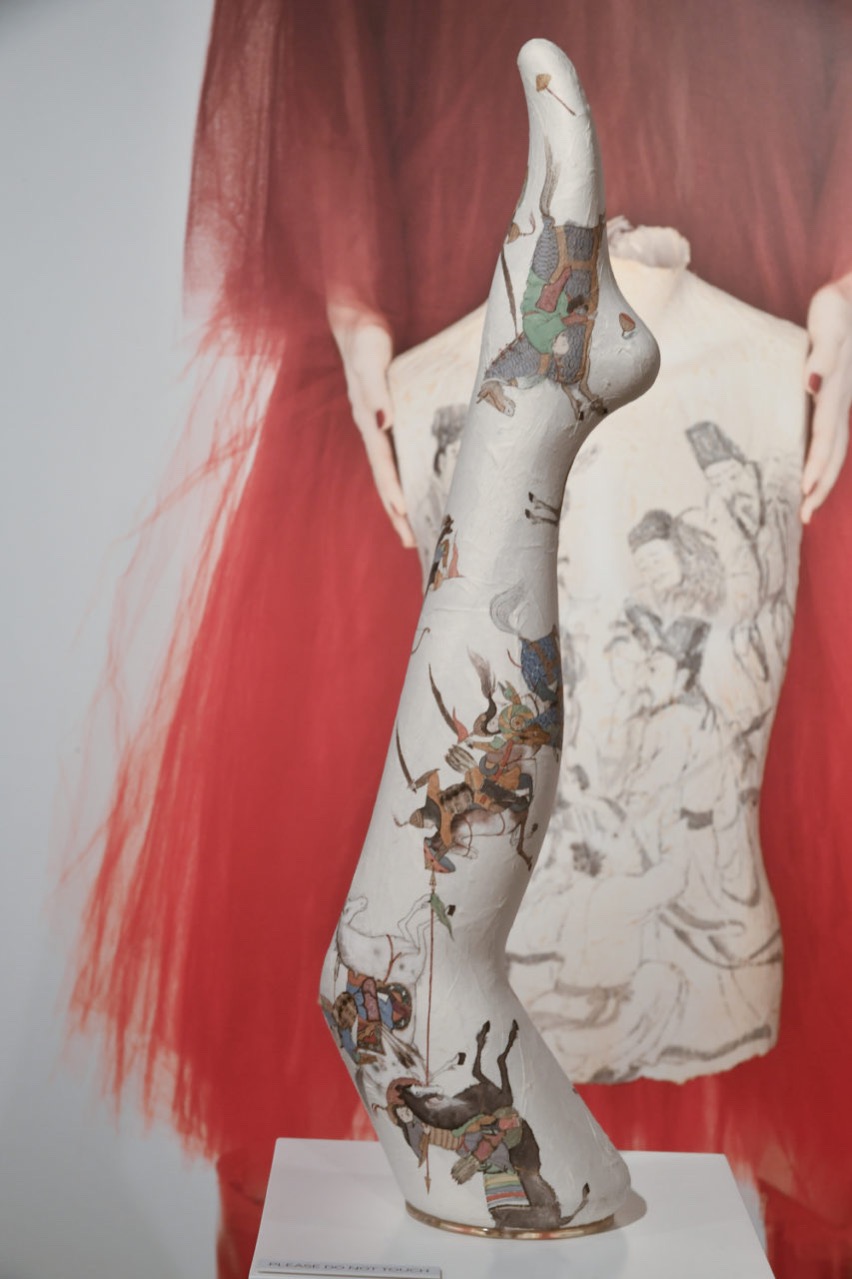
The first time I saw Peng Wei’s work was last year, at a local brush painting exhibition titled “The Weight of Lightness: Ink Art at M+”. On exhibit there was her work Between Clouds And Water from the Letter from Afar series. At first glance, it looks no different from an ordinary traditional landscape scroll painting. At a closer look, though, I discovered in it a love letter written by the British poet Byron. The imagery of words and landscape blend together, and surprisingly connect in an intriguing way, leaving behind a romantic feeling of time and space crisscrossing.
Her idea of making craft books at first gradually developed into that of turning two-dimensional paintings into three-dimensional scrolls. After painting the landscape and characters, she felt that there was blankness within so she copied on it a letter by a Western artist. She then discovered that they were surprisingly in harmony, and in the end, it grew into a piece in oriental style with a Western touch. “I like to read Western literature very much, especially letters written by poets and artists. While copying these letters, I can see myself in them. Just as most artists consider themselves being out of accord with the times and being rejected by the era they live in, creation itself becomes a kind of redemption.” Even Peng Wei, who is so renowned within the artistic circles, has this thought? “Certainly. I believe everyone has this thought at some point. When I feel terrible, I will tell my own story through copying others’ letters, and within this creative process, I feel calm and at peace. In fact, the correspondence by Western artists and Chinese traditional landscape paintings are connected to one another in nature, and Chinese and Western art are compatible in humanism.”

彭薇形容自己與她的作品有著同樣的特質:不尖銳、偏柔美和帶點小幽默,她不拘泥於表現形式,創作靈感多源於「好玩」。「某天我家隔壁做衣服的人掉了許多殘舊的模特兒模型於垃圾站旁,我看到了覺得很有意思,於是便撿回去,在上面畫畫,這概念成為了後來的「身與衣」系列。我也很高興我的作品能啟發別人,在這次與JOYCE的合作中,藝術總監Sean Kunjambu及著名攝影師Wing Shya把這些作品加入當季的衣服,拍攝出具感染力的作品,讓人覺得很好玩、很有意思。」勇於創新的彭薇擁有中國傳統水墨畫的深厚功力,作品古典清雅又充滿實驗性,把水墨推向嶄新的藝術層面。
Peng describes herself as sharing the same qualities as her creations: not sharp and acute, leaning towards a kind of gentle beauty, with a dash of humor. She does not bother herself too much with the form of presentation, and derives her inspiration usually from the idea of “having fun”. “One day, a clothing maker who lives next door threw away a lot of worn mannequins next to the garbage station. Finding them very interesting, I took them back home and drew on them. This concept later developed into my Body and Clothes series. I am also very excited that my creations can inspire others, and in this collaboration with JOYCE, Sean Kunjambu, the art director, and well-known photographer Wing Shya incorporated these creations into the clothing items for this season, and managed to photograph works that are appealing. This is at once entertaining and intriguing.” Peng, who dares to innovate, is a master in Chinese traditional brush painting. Being classical, refined, yet fully experimental, her work has pushed brush painting to a brand new artistic level.
